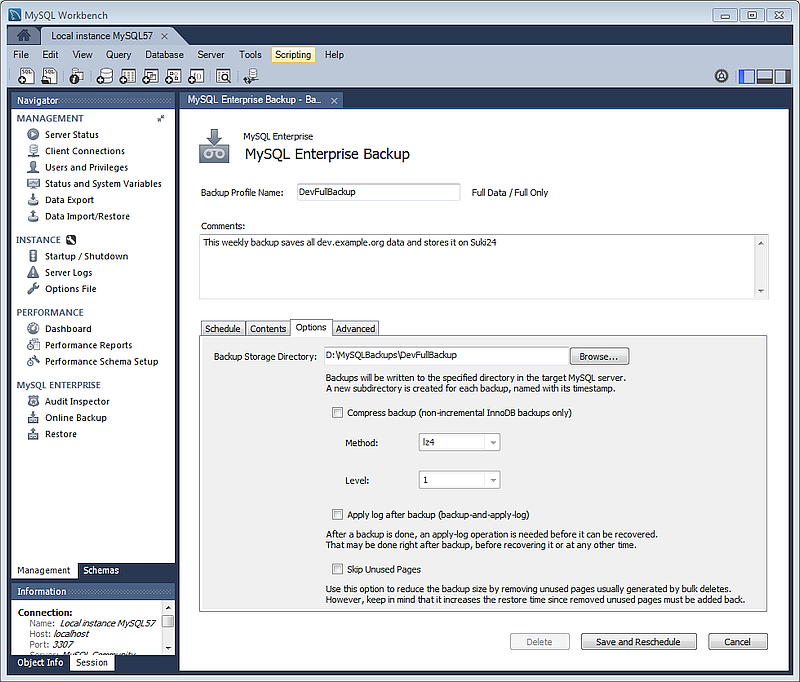

You can restore a dump on a server with a different version.The fact that the backup is created in an open format has two important advantages: To dump a specific database, use the name of the database instead of the –all-database parameter. Often you need to backup not the entire server, but a specific database. To recover data, use the following command: mysql -user root -password mysql < all-databases.sql To create a backup of all MySQL server databases, run the following command: mysqldump -user root -password -all-databases > all-databases.sql It is advisable to add this directory to the global PATH variable. For example, for MySQL 8.0, the path to the directory is C:\Program Files\MySQL\MySQL Server 8.0\bin\. Typically, mysqldump is located in the MySQL Server installation directory.

However, it is preferable to restore a large database using the mysql command utility. A small database can be restored by copying the contents of the file into the SQL editor of a graphic IDE (for example, in MySQL Workbench) and running it from there. It is easy to restore a MySQL database from a file created by mysqldump. This command-line utility creates a backup file with a set of commands to recreate the database. When installing a MySQL server, the main backup utility is automatically installed – mysqldump.

#Mysql enterprise backup requirements how to#
How to create a logical MySQL backup Simple backup of MySQL database using mysqldump This is useful when different backup strategies are applied to different data.
#Mysql enterprise backup requirements windows#
This article is limited to MySQL database backups for a Microsoft Windows Server only. Because there are several ways to backup MySQL database on Windows, this article will review all the different options so that you can select the method that works for you.


 0 kommentar(er)
0 kommentar(er)
